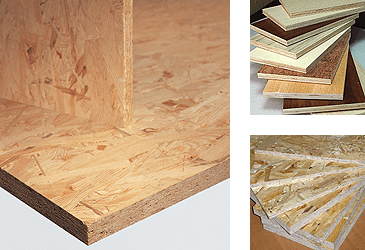
A stable mixture of one or more waxes in water is known as wax emulsion. It is notable that waxes and water are immiscible. Surfactants are material that used by manufacturers of wax emulsion to brought together wax and emulsion to a stable condition.
Wax Definition and Types used in wax emulsion
Generally, wax is unbranched alkanes that Solid at ambient temperature and have melting point range of 20 to 70 degree Celsius. Further, they are Thermoplastic in nature and insoluble in water. Soluble in ether, benzene, and certain esters. Most of chemicals do not affect wax.
Depending on the final application of wax emulsions variety of wax emulsion is available in the market which is made from different raw material which is mainly waxes.
Waxes can be distinguished by their origin as follow:
- Natural waxes
- Mineral waxes
- Synthetic waxes
- Petroleum waxes
Carnauba wax, Beeswax, Candelilla wax or Ricebran wax, Paraffin wax, Microcrystalline Montanwax, LDPE and HDPE, Maleic grafted PP and Fischer-Tropsch waxes are example of most used waxes in wax emulsion manufacturing.
Wax selection for manufacturing of wax emulsion
Wax plays important role in wax emulsion. End application of wax emulsion and the coating process also influence selection of wax emulsion and the most appropriate wax or combination of them.
Melting Point ASTM D87: is very crucial in selection of wax emulsion as wax melts in coating process it migrates to surface. As the temperature drops wax starts to re-crystalize and eventually, form a continuous film that encourages blooming.
Further, if hard wax or solid wax like paraffin wax is designated then certain particle size and particle size spreading for wax emulsion should be picked to allow particles to migrate to the film surface in order to achieve Ball Bearing Mechanism at concentration level once wax emulsion is applied.
Selecting hard wax or soft wax will influence the final application of wax emulsion. HDPE, paraffin wax and carnauba waxes are typically used to counteract blocking. Factors affecting blocking of wax emulsion include the coating surface-free energy, topography of the coating and the hardness of selected wax used in making wax emulsion.
Good slip properties of wax emulsion require the slip additive to concentrate at the surface during and immediately after application and curing of wax emulsion. Hard waxes resist abrasion better than soft materials. Water resistance, is another significant property achieved with waxes.
Wax Emulsions Stability
Stability of wax emulsions or in business terms shelf life of wax emulsion is controlled by many aspects. PH of the wax emulsion needs to be controlled and must be within one unit of the system to which it is added. Moreover, manufacturers of wax emulsion must select surfactants which are compatible with other materials besides matching the wax emulsion charge with the coating charge enhances stability.
In addition, order of component addition in water-based wax emulsion formulations can be a critical factor in maintaining stability. Storage condition of wax emulsion is also important. Wax emulsion needs to be stored at room temperature.
Wax Emulsion Emulsifiers
Different type of emulsifiers or combination of them is used to make wax emulsion. These can be anionic, cationic or non-ionic in nature. Fatty alcohol ethoxylates are the most common emulsifiers used worldwide due to the fantastic characteristic and stability against hard water, pH-shock and electrolytes. However, it is notable final application of wax emulsion affect the selection of emulsifiers. Table below outlines some of the final application of wax emulsion and as a result selection of emulsifiers.
| Compatible with ionic | Good wetting and emulsifying properties |
| Impart good freeze-thaw stability | Compatible with nonionic |
| Less deleterious to mechanical properties (i.e., better emulsion stability) | Best performance in alkaline systems |
| Perform well over a large pH range | Lower water-sensitivity |
| Less foaming than anionic | Very effective in polar media |
| Better stability in hard water | Good adhesion and anti-corrosion properties |
| Less solubility at high temperature (Cloud point) | Better interaction with pigments |
| Work for all types of emulsions | More sensitive to freeze-thaw cycling |
| Lower reduction of interfacial tension | More foaming than nonionic |
Applications of wax emulsions
Wax Emulsions has vast technical applications in many industries. Depending on the nature of wax used in making wax emulsions final application of wax emulsion is introduced.
Further, advancing properties like matting & gloss, hydrophobicity, soft touch, abrasion & rub resistance, scratch resistance, release, corrosion protection and anti-blocking must be achieved by addition of wax emulsion. If manufacturers of wax emulsion use natural waxes the best application is for coating fruits and candies and crop protection.
Moreover, in pharmaceutical and medical industries wax emulsion based on Beeswax, Carnauba wax and Paraffin wax are used in creams and ointments. Depending on the properties of wax used as base in wax emulsions like melting point has led to the use of wax emulsions in applications such as paper coatings, paint and ink additives, and even wet sizing for pulp and paper applications.
It is notable wax emulsions can be formulated to deliver required properties in final application but manufacturers of wax emulsion do have choice to use natural waxes to make green products or use petroleum based waxes.
Wax Emulsions Packing
Wax emulsion can be packed in a variety of formats. Wax emulsion can be delivered in bulk liquid (via tank truck or railcar) and/or wax emulsion can be filled in brand new drums

 فارسی
فارسی